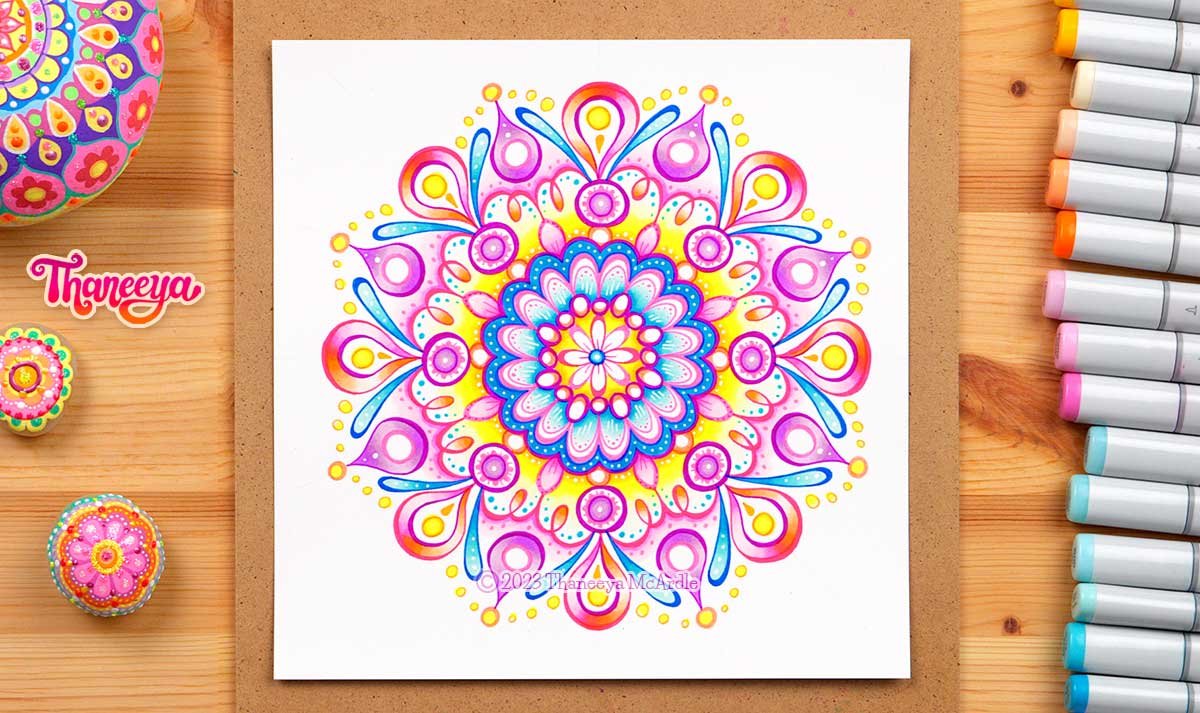Learn to Draw Creative Mandala Art
Unlocking the Secrets of Crafting Intricate and Inspiring Mandala Designs

Mandalas have captivated artists and enthusiasts alike for centuries, with their intricate patterns and symbolic meanings. These circular designs, originating from various cultural and spiritual traditions, serve as powerful tools for meditation, self-expression, and creativity. Learning to draw mandalas not only offers a therapeutic outlet but also provides a platform for exploring one's imagination and honing artistic skills. In this article, we delve into the fascinating world of mandala art, exploring its history, significance, and offering guidance on how to create your own unique designs.
Understanding Mandala Art: The term "mandala" originates from Sanskrit, meaning "circle" or "discoid object." Across different cultures, mandalas hold diverse meanings, ranging from representing the cosmos to symbolizing unity, harmony, and the interconnectedness of all beings. These intricate patterns are often used as aids to meditation, guiding individuals towards a state of inner peace and self-awareness.
Mandala art typically follows a radial symmetry, with patterns radiating from the center outwards. Common elements found in mandalas include geometric shapes, intricate patterns, and symbolic motifs such as lotus flowers, spirals, and celestial bodies. The process of creating mandalas can be both meditative and liberating, allowing artists to tap into their subconscious and express their inner thoughts and emotions.

Learning to Draw Mandala Art: While the prospect of creating mandalas may seem daunting at first, it's important to approach it with an open mind and a willingness to experiment. Here are some steps to guide you through the process:
-
Begin with Basic Shapes: Start by drawing a circle as the foundation of your mandala. From there, you can add concentric circles, squares, triangles, or any other geometric shapes to build the framework of your design.
-
Explore Symmetry: Experiment with different types of symmetry, such as radial, bilateral, or rotational symmetry. This will help create balance and harmony within your mandala.
-
Add Intricate Patterns: Fill each section of your mandala with intricate patterns and designs. You can draw inspiration from nature, architecture, or traditional art forms from around the world.
-
Incorporate Symbolism: Consider adding symbolic elements to your mandala that hold personal significance to you. These could be objects, animals, or symbols that represent aspects of your life, beliefs, or aspirations.
-
Embrace Imperfection: Remember that mandala art is a reflection of your inner self, and there are no strict rules or guidelines to follow. Embrace imperfections and allow your creativity to flow freely.
Tools and Techniques: Creating mandala art requires minimal materials, making it accessible to artists of all levels. All you need is paper, a pencil, a ruler, and a compass to get started. You can also experiment with different mediums such as pens, markers, or paints to add color and depth to your designs.
In terms of techniques, practicing mindfulness and staying present in the moment can greatly enhance your experience of drawing mandalas. Focus on each stroke and breathe deeply as you let your creativity unfold on the page.
Conclusion: Drawing mandala art is not just about creating beautiful designs; it's about embarking on a journey of self-discovery and expression. Through the process of drawing mandalas, we can tap into our inner creativity, find solace in moments of stillness, and connect with the deeper aspects of our being. So, pick up your pencil, unleash your imagination, and let the magic of mandala art guide you on a path of self-expression and discovery.



